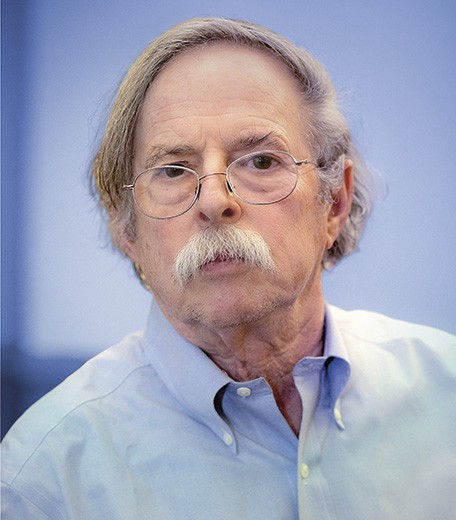Download
Acceptance speech
Arthur Horwich
Arthur Horwich (Chicago, United States, 1951) received his MD from Brown University in 1975. He completed an internship and residency in pediatrics at Yale-New Haven Hospital in 1978, at which point his growing interest in viruses led him to a postdoctoral position at the Salk Institute (La Jolla, California). After three years at Salk, he found in medical genetics the balance he sought between research and the clinic, and moved to the Department of Genetics at Yale University Medical School, where he remains today as Sterling Professor of Genetics and Professor of Pediatrics. A Howard Hughes Medical Institute Investigator from 1990 to 2020, he has served as an associate editor of Cell and on the editorial board of Journal of Cell Biology, as well as co-organizing three Symposia on Molecular Chaperones at Cold Spring Harbor. Among his other distinctions, Horwich is a Fellow of the American Association for the Advancement of Science.
In 1972, Christian Anfinsen won the Nobel Prize for a series of experiments that found that some small proteins folded spontaneously in a test tube. His work established the idea, later disproved by Hartl and Horwich, that all proteins folded spontaneously, even within the cell.
In the 1980s, Hartl and Horwich were separately studying how proteins get into the cell compartments known as mitochondria, which are enclosed within a membrane. They were the first to question the hypothesis of spontaneous protein folding inside cells.
An experiment by Horwich on a mutant yeast strain seemed to show that certain proteins crossed the mitochondrial membrane correctly but, once inside, showed no signs of activity. Hartl’s lab confirmed this result, initiating a productive collaboration between the two scientists which led them to the discovery that the protein Hsp60 (Hsp standing for heat shock protein) was responsible for ensuring that protein folding happened correctly. That is, it acted as a chaperone for the proteins. Hartl and Horwich published these conclusions in Nature in 1989.
They confirmed that the chaperone acts by encapsulating the protein to isolate it from the environment. They also observed that, in single-celled organisms like the bacteria Escherichia coli or yeast itself, lack of Hsp60 caused an aggregation of unfolded proteins that led to their death. In spite of the initial skepticism, Hartl and Horwich definitively ousted the prior view of protein folding in the cell.


